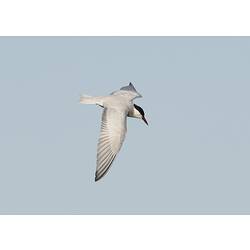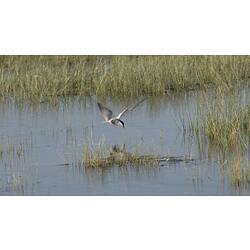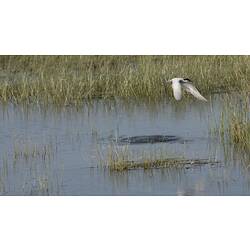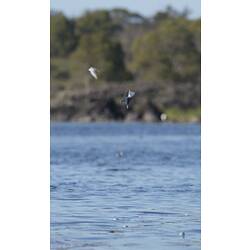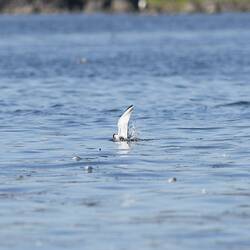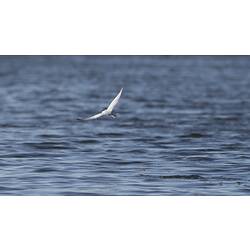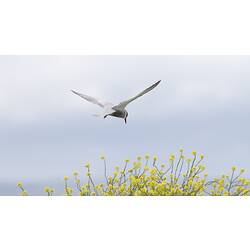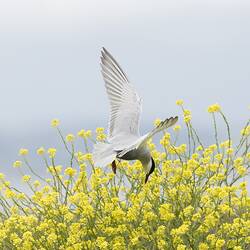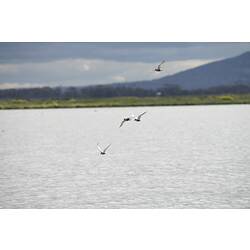General Description
Body grey above and dark grey below. Wings angular, grey above and white below. Tail white and slightly forked. Bill and legs are red. They have a black cap with white cheeks and neck. After the breeding season, the underparts and forehead become white with white streaks through the black cap, grey body plumage becomes paler, bill and legs turn black. Bill to tail length up to 48 cm.
Biology
Whiskered Terns feed on small fish, crustaceans, frogs, flying insects and insect larvae. Prey is caught by dipping, plunging, or hawking. Dipping involves skimming the water surface capturing insects on or below the water. When plunging, terns hover 2-4 m above the water with wings raised then dive into the water. Hawking involves taking insects during flight. Whiskered Terns breed in loose colonies on inland marshes or swamps. The nest is a raft of floating or moored vegetation. Their breeding season is highly irregular. When nesting, the whole colony of Whiskered Terns will attack a predator. Other birds take advantage of this protective mobbing behaviour by nesting amongst the colony. The Whiskered Term is the largest of Australia's marsh terns.
Distribution
Madagascar, south-eastern Africa, Europe, and Asia. Tthroughout mainland Australia, except for central arid regions.
Habitat
Shallow freshwater wetlands and swamps, saline and brackish lakes, also in irrigated croplands.
More Information
-
Animal Type
-
Animal SubType
-
Brief Id
Grey and white bird with a streaked black cap and angular wings.
-
Maximum Size
48 cm
-
Habitats
-
Diet
Carnivore
-
Endemicity
-
Commercial
No
-
Conservation Statuses
CITES: Not listed, FFG Threatened List: Not listed, EPBC Act 1999: Not listed, IUCN Red List: Least Concern
-
Taxon Name
-
Scientific Author
(Pallas, 1811)
-
Common Name
Whiskered Tern
-
Kingdom
-
Phylum
-
Subphylum
-
Class
-
Order
-
Family
-
Genus
-
Subgenus
-
Species Name
hybrida

